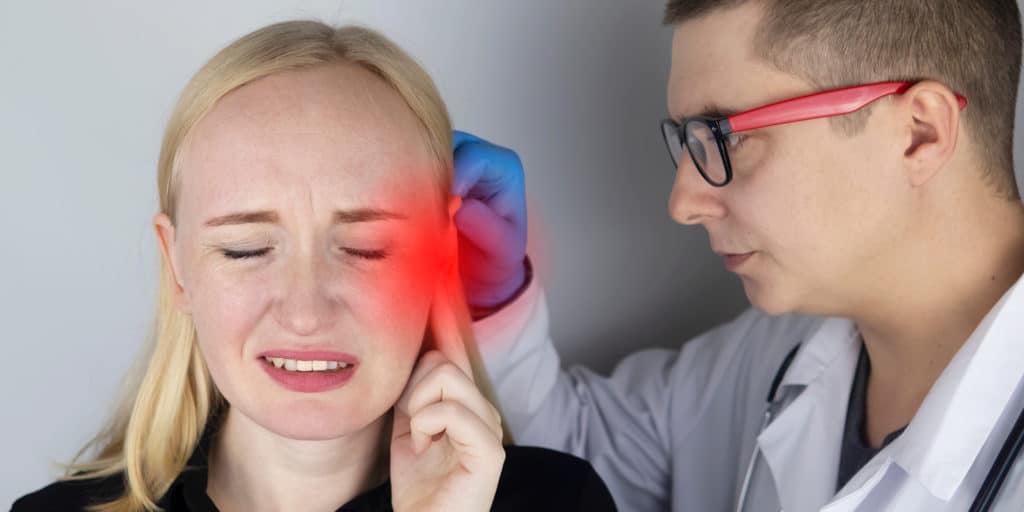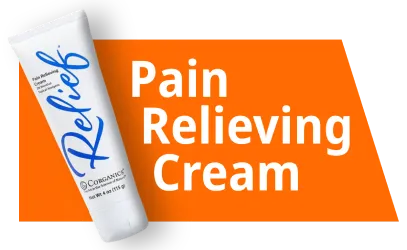My chronic pain started as a teenager. I’m 53 now. Mostly, I suffer from back pain, rib pain, joint pain, migraines, and facial pain. Ten years ago, my doctor told me my facial pain was caused by a condition called atypical trigeminal neuralgia. But getting that diagnosis had taken approximately twenty years.
About Trigeminal Neuralgia
Trigeminal neuralgia normally affects only one side of the face, although it can affect both. There are two main types – Classic and Atypical.
Classic trigeminal neuralgia triggers lightning bolt or electric shock type pain. Shocks can happen once or repeatedly and sufferers can have pain-free remission periods. This type may be caused by the compression of the trigeminal nerve by a blood vessel. The condition can also occur in people with multiple sclerosis. Often, however, the cause is unknown.
On the other hand, the pain caused by atypical trigeminal neuralgia is normally constant, with burning, aching, throbbing, and stabbing on the side of your face. The cause is often unknown.
I occasionally receive the shocking pain associated with classic trigeminal neuralgia, but mostly my symptoms fall in line with atypical trigeminal neuralgia – that constant, aching, burning and stabbing with an unknown cause. The pain predominately affects my right side, but occasionally my left side acts up as well.
I Presumed My Pain Was Toothache


My pain first started in my early twenties. I frequently suffered from what I thought was a toothache. Sometimes I could feel an aching in the background, but often, it was excruciatingly painful, radiating through the whole right side of my face. My cheek, eye, temple, and head hurt. I had similar pain on my left side, but it wasn’t as bad, nor as frequent.
Thinking it was a dental problem, I informed my dentist. I expected to need treatment or possibly extract a tooth. But neither of those applied. In fact, my dentist saw nothing wrong with any of my teeth. He said there was no reason for my pain.
I saw him regularly, and at every appointment, I complained about my toothache. Time after time, he examined my mouth thoroughly but found no dental issues. At one point, he told me, “some people just get pain like this and you need to put up with it.” I was used to putting up with pain, and oddly, that suggestion didn’t seem out of the ordinary to me at the time. So I tried to put up with it.
Nobody Could Tell Me Why I Was In Pain
I sought out consultations from other dentists, but they too had no answers for me. When I complained to my doctor about the pain, her first suggestion was to see a dentist. After I explained that I had already asked my dentist several times, she suggested the chronic migraine headaches I lived with were to blame.
My doctor prescribed migraine medication, which helped with my migraines, but not with the tooth and face pain. I took strong doses of painkillers for other pain issues, but this also didn’t help with the pain.
As the years went on, the pain became more persistent. I often felt as if a pair of pliers were clamped on, twisting and pulling my teeth. Oftentimes, it felt as though a knife was wedged between my teeth, slicing through my cheek. I had constant pain in the right side of my face. It was gnawing, aching and burning, from my chin up to my head. My cheekbone felt as if it had been smashed with a baseball bat, so much so that I expected to see a bruise when I looked in the mirror.
The pain was debilitating. It was wearing me down. I struggled to eat some days, struggled to clean my teeth and wash my face. It affected so many aspects of my life. I felt hopeless.
Another New Dentist – and a Atypical Trigeminal Neuralgia Diagnosis
In my early forties, I scheduled a routine appointment with my dentist. On the way there, I told my husband my intention of asking the dentist to remove some of my teeth. Still, I convinced myself I had a dental issue.
At the dental practice, I found out that my dentist had retired. A new younger dentist had taken over the practice and I told her about the excruciating pain in my teeth and face. She examined me thoroughly and took x-rays. Then, she gave me the same answer as always – ‘there is not a dental problem.’
However, this time, she didn’t just dismiss me. She explained that several nerves are located in the face and that those nerves were causing my pain. After twenty years of suffering, someone had finally given me an explanation.
The following day, I had an appointment to see a rheumatologist about another problem. With the new information my dentist offered me, she told me my diagnosis: trigeminal neuralgia. My general practitioner then prescribed me a specific medication which could help the pain.
Not only had I gotten a diagnosis and a prescription, but I was also given hope.
A Correct Diagnosis of Atypical Trigeminal Neuralgia Means Correct Medication


A new journey began. Over the next few years, I visited a neurologist, a facial pain expert, and pain specialists. Finding the right medication took a lot of trial and error. Some meds didn’t help at all; others helped, but came with awful side effects. Thankfully, we found meds which reduced the pain without too many side effects.
In addition to the medication, I use heat pads and cool packs. I’ve also tried Lidocaine local anesthetic patches and acupuncture. I use a range of coping mechanisms including breathing, relaxation and distraction techniques.
It’s now been 10 years since the diagnosis. My pain is still constant, but most days at a level I can cope with. But why did I have to cope with undiagnosed pain in my face for twenty years? Each time I brought up my pain, I was quite simply left undiagnosed and told to “just put up with it”.
We Atypical Trigeminal Neuralgia Patients Need to be Persistent
Many people live with pain like this without any explanation.
Making doctors listen to us and really understand can often be difficult, so we have to find ways of explaining our pain to them well.
Since my diagnosis, I started an awareness page and support group on Facebook with two other trigeminal neuralgia sufferers. I want the name of the condition to become more familiar so that people with pain like mine can recognize it and hopefully get a correct diagnosis sooner.
I don’t want other people to “just put up with it”. Trigeminal neuralgia is persistent. We, as patients, need to be persistent too.
Like this story? Read more about why you shouldn’t call Trigeminal Neuralgia the suicide disease.
Would You Like to Share Your Story About Atypical Trigeminal Neuralgia?
Are you on Facebook?
Join our online community by clicking here.
Pain management starts and ends with health awareness and dedication. Click here to read more.





My story began 2 years ago….I’ve been having ongoing oral pain, along with facial pain with ear pain and headaches with no resolution. I’ve seen multiple dentists, Oral Surgeons, Neurologists, and ENTs over this time frame and currently. Multiple dentists send it could be sinus related so I ended up seeing an ENT and got sinus surgery just recently and that didn’t help the cause. My dental xrays didn’t show any clear signs of cracks or infections to cause such pain. The pain started in the middle of the night 2 years ago when I was wearing the smile direct club aligners and I caught myself grinding my teeth. I woke up with incredible pain to the point where it made me sick to my stomach an nauseous. I explained this to one dentist and they said it could be some type of TMJ so they gave me a night guard with muscle relaxers and that didn’t help either. Several teeth were hurting so I went to go see an endodontist and I ended up having a root canal and crown place on my #12 tooth. Which Im currently still having pain in to this day….very odd right?
They did find small cracks in a few teeth and I has those removed…it ended up relieving the pain some, but then it came right back. So then I thought could this be nerve related? So I went out and saw a Neurologist. I was put on several medications top of line nerve pain medication that didn’t even break a sweat to it. I also was put on migraine medication and had multiple MRI’s done as well thinking it could be Trigeminal Neuralgia, but it wasn’t adding up. I just turned 36 and I’m having this awful oral pain that is stopping me from doing my day to day regular activities because im in so much pain. Is this some form of TMJ or some different type of Trigeminal Neuralgia that started out of no where??
After seeing 8 dentists, 3 endodontists, 2 ENTs, 2 Neurologist, and 3 Oral Surgeons where do I go next?
I have Atypical TN, I have the most pain deep in my Left ear. The pain is there always and some days I have intense pain in my ear and also occasionally my teeth /jaw as well. I take Tegretol daily it helps but not with the flare up in my ear I have to take a 2nd tablet for it to dull down, but the pain never goes.
This is my story too! I have ATN, Occipital Neuralgia, and Chronic Migraine! I just had the GammaKnife Radiosurgery for TN. Im also getting a radio frequency ablation on the 20th for ON. Im praying that I get some relief soon! It has been a horrific experience and I wouldn’t wish it on anyone.
Be careful what you wish for. Radiation has been know to CAUSE trigeminal neuralgia! My wife is an example.
I have suffered with trigeminal neuralgia. I found an article on using Botox injected into the nerve. I asked my dentist about it and he researched it and spoke with The Mayo Clinic for advice. I had the injection about 3 1/2 months ago and some tingling is returning. We knew that it only work for about 6 months. It has been worth it. I paid $400 for the Botox & needed 2 injections. I’m going to see if a pain clinic can do the injections so possibly they’re covered under medical insurance. My dental coverage did not cover the cost. Google Botox for dental pain ( I think that’s how I found information on Botox uses.
Can you advise what medication you use to ease ATN. I’m on Belbuca 450 and Lyrica but none are effective. Waiting in a consult with Mayo clinic.
None, it is absurd. Off course they are ineffective, it is a pinched nerve, it is physiological. Gamma rays and radiation may actually be the cause depending on your occupation and the hazards involved. However, that would be the opposite of a nerve pinch, as the outside input would be sending signal to your face, to your trigeminal nerve and into your central nerve system but in that case ( unless you use a divice in one ear only) it would be affecting both sides.
Thank you Elizabeth! This is my story too. I’m 51, I was diagnosed with TN 2 months ago after decades of pain and searching. I believe I have a mix of both types as well. So far I’ve had 1 medication. It helps with a lot of the shocking jolts of pain. Some of it still comes through but it’s a big relief. It doesn’t seem to cover the daily pain that camps on my face, especially over my eye. I’m relieved to finally have an answer even though it’s a difficult one. One day at a time is what I practice. Thankfully, my faith and my beloved husband are my strength these days.
does cold air or air conditioning set off your facial pain?
Ask a neurosurgeon if nerve ablation could be done. There are treatments with nerve stimulation that “mask” the pain too. Sometimes the ONLY way to get relief is with surgery. If your pain comes on with raised blood pressure, it might be ‘easily’ treated with microvascular decompression. This procedure involves relocating or removing blood vessels that are in contact with the trigeminal root to stop the nerve from malfunctioning. With microvascular decompression, your doctor makes an incision behind the ear on the side of your pain. Then, through a small hole in your skull, your surgeon moves any arteries that are in contact with the trigeminal nerve away from the nerve, and places a soft cushion between the nerve and the arteries.
This treatment, if called for is extremely effective.
Pharm line is going down